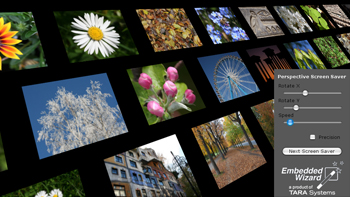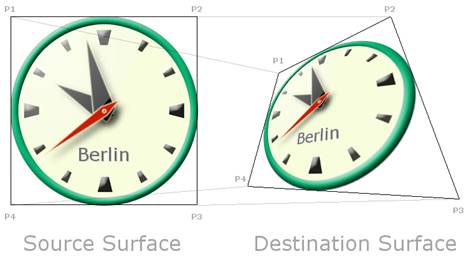User interface development for consumer electronics products, as well as industrial, home and automotive appliances is more and more influenced by the demand for stylish interface designs with rich effects and 3D appearance – driven by trendsetting products, e.g. the Apple iPhone, iPad or Android based devices. In order to support GUI developers to realize such fancy and compelling GUI concepts on - sometimes limited - embedded platforms, Embedded Wizard introduces Lightweight 3D.


Benefits of Lightweight 3D
Easy to use: The creation and modification of Lightweight 3D effects is seamlessly integrated into the familiar workflow. No dedicated 3D tool know-how or OpenGL programming skills are required. Perspective distortions, zoom or rotation can be applied to any object with drag-and-drop in the composer or with dedicated functions during runtime.
Suited for "lightweight" embedded platforms: Embedded Wizard's graphics engine - including the Lightweight 3D operations - can be optimally adapted to the specific hard- and software capabilities of every suitable platform. Thus, the best possible graphics performance is achieved on embedded platforms.
Capabilities of Lightweight 3D
- Rotation, scaling and perspective distortion
- New effects for motion, rotation, flipping
- Support of new design concepts, e.g. analogue, rotating controls and needles, image flow, moving, zooming and rotating menu systems, objects moving in a 3D space, mirrored and illuminated objects (depending on the platforms capabilities).
- The transformed surface of an object remains able to react to mouse and touch inputs.
- Applicable to images and all visible objects in Embedded Wizard.
Based on Perspective Correct Projection
Lightweight 3D effects are solely based on perspective correct projection of an image to a four-point polygon. Depending on the shape of the polygon the original image can be scaled, rotated and deformed in any desired way e.g. to create the impression of an image tilted backward in a 3D space. The following illustration demonstrates this idea:
